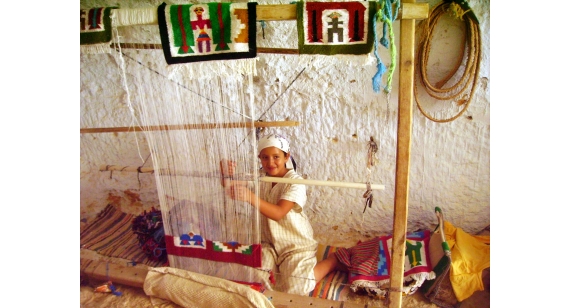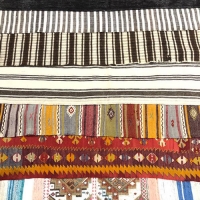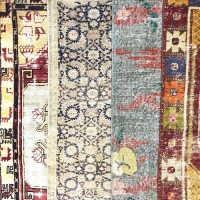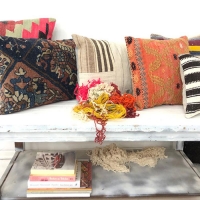
WEAVING TYPES OF KİLİMS
It is possible to divide the weaving methods into three main categories. These; Kirkitli weavings, shuttle fabrics, multiply weaving can be classified as. Kirkitli fabrics can be divided into two groups as plain weavings and pile fabrics. Plain weavings are sumac, bell, cicim and kilim. Pile fabrics can be expressed as carpets and tulle. It is possible to classify shuttle weaving as plain, twill and atlas. Sometimes a very beautiful pattern can be created with weft yarns passing through an upper and a bottom of the warp yarns. As a result of this weaving, when the boundary of the neighboring pattern is swirled into the last warp yarn, a loop or slit can be formed on the vertical lines faced by the weft in two colors. The kilims, where such marrows occur, are called marrow kilims. It is not preferred that the number of buttonhole is more than 1 cm. Motifs are generally made of angular, diagonal, transverse and dashed lines. The structure and value of a kilim depends on the state of the buttonhole.
It is very easy to remove these marrows by using various techniques in all fabrics and especially in kilims. It is seen that some of the districts are given names such as gedirge, kirtik, torn, slit in the headlights. Kilims with curved pattern borders A technique used to prevent the occurrence of buttonholes. Patterns of cross and transverse lines are by means of these techniques. In this way, by eliminating various deficiencies, the kilims will be provided to the desired standard.
In the weft-weaving technique, the weft threads are passed through the warp yarns in a straight line. In order to shape the weft yarns according to the motif, it is strengthened in some places, and in some places it is lightly compacted and the weft yarns are shaped with the appropriate curvature according to the motif. Tapered and loose compression of the weft yarns causes oblique and rounded lines. The fact that a flower without a geometric sharpness, a branch of a curved branch, a leaf can be touched in a realistic way is only possible with the presence of a very precise woven pattern. Among the normal weft yarns, additional weft yarns are pressed in the kilims; The kilim weaving is smoothly woven between the warp threads and the weft yarns between the weft yarns. After the weft yarns have been compacted, the weft lines can be obtained by adding a small weft to the weft yarns. After this inclination according to the pattern, the weft thread is properly fixed again. However, this technique is used in kilims that do not have geometric patterns.



